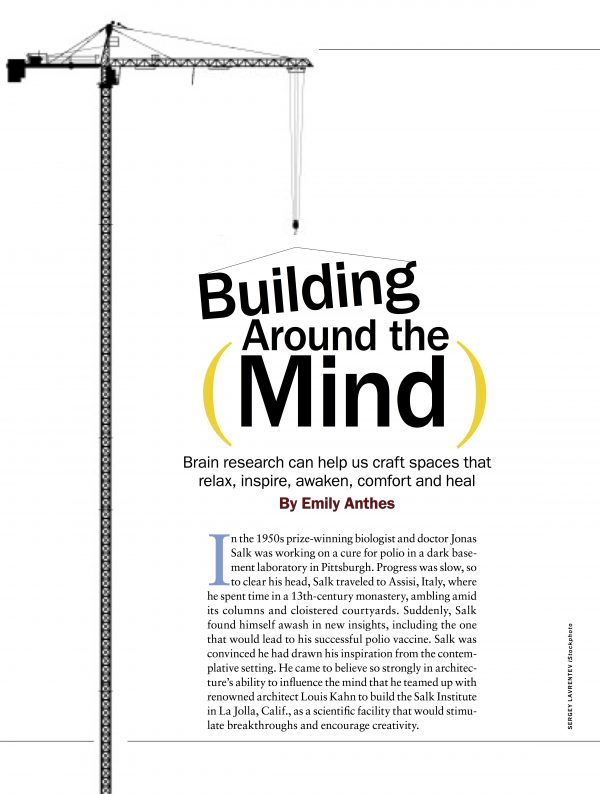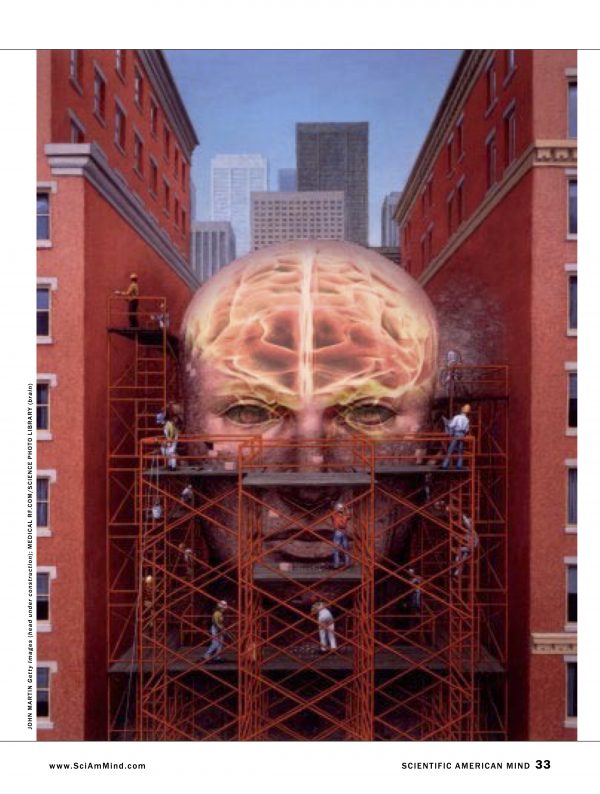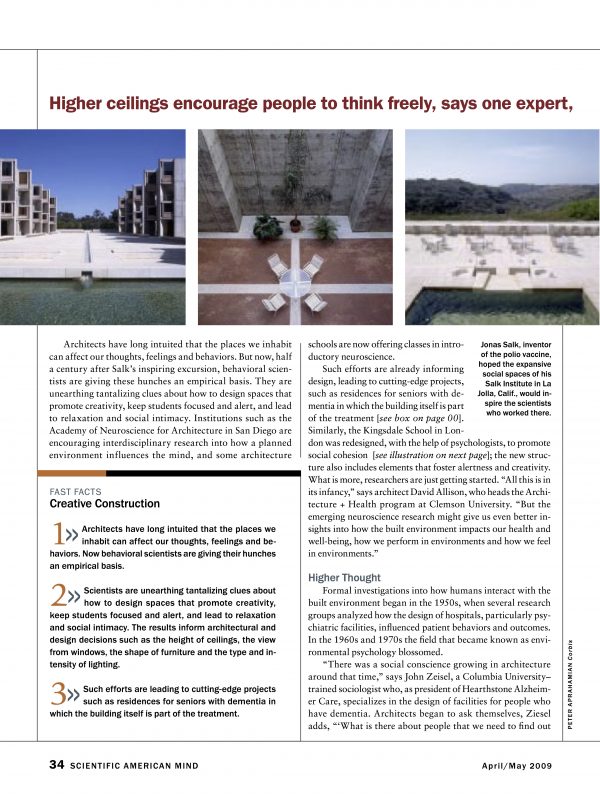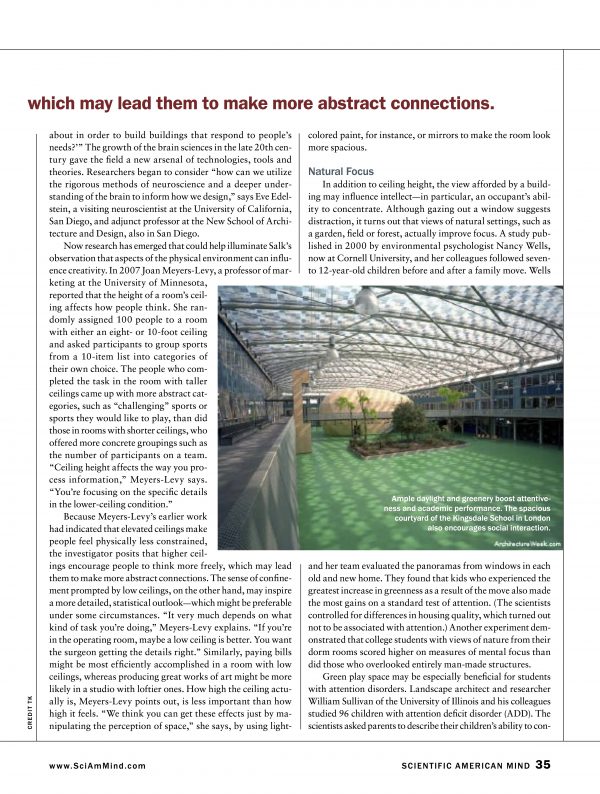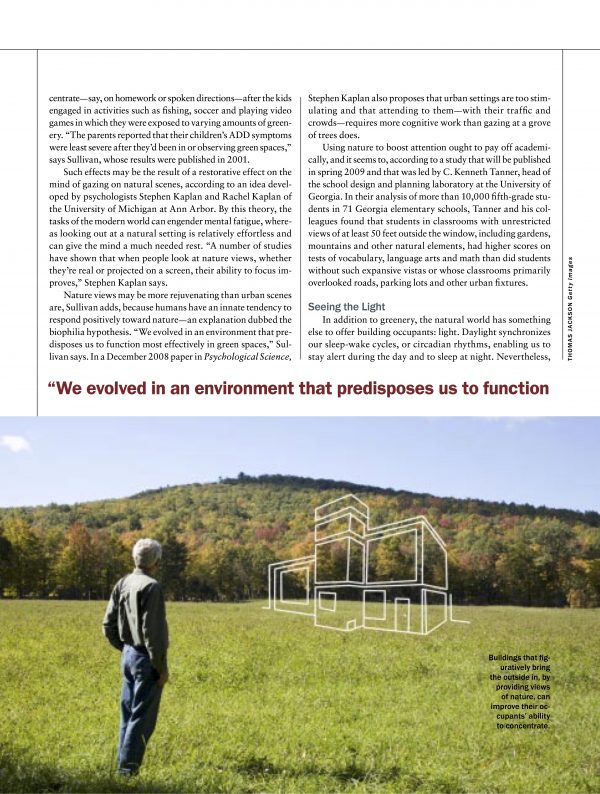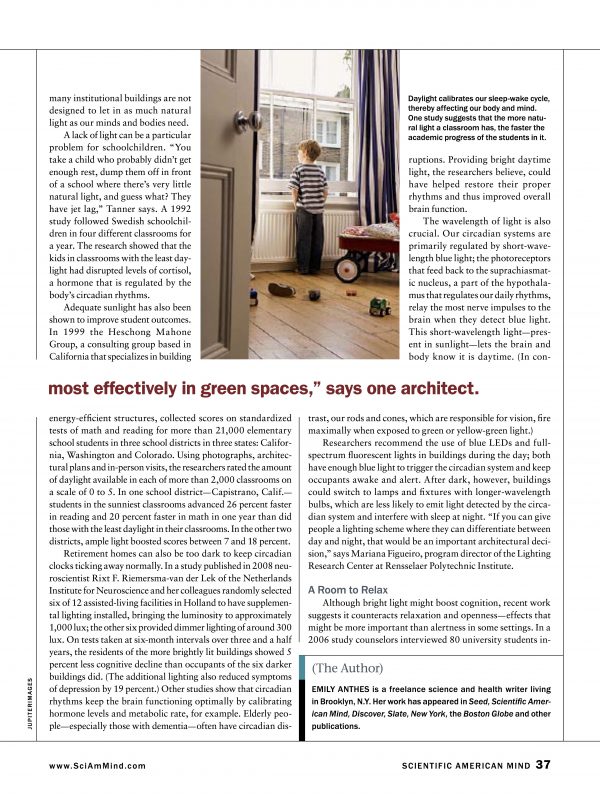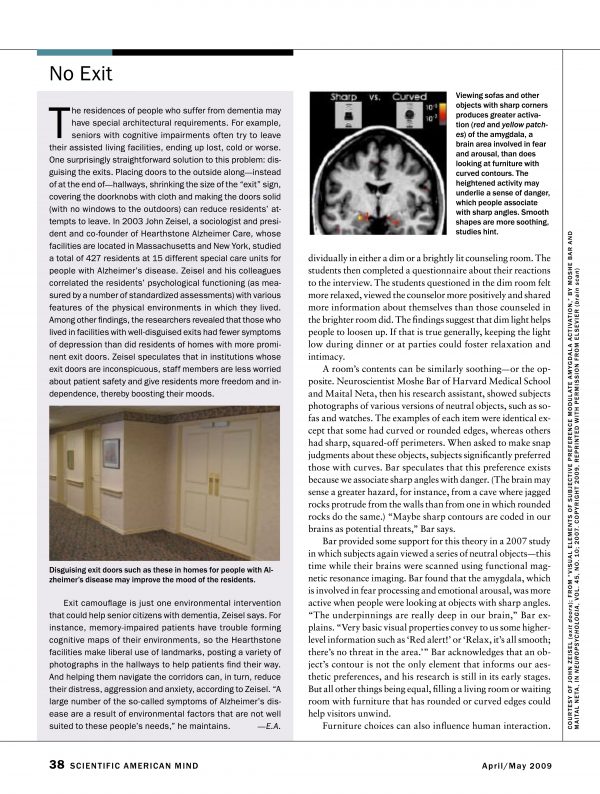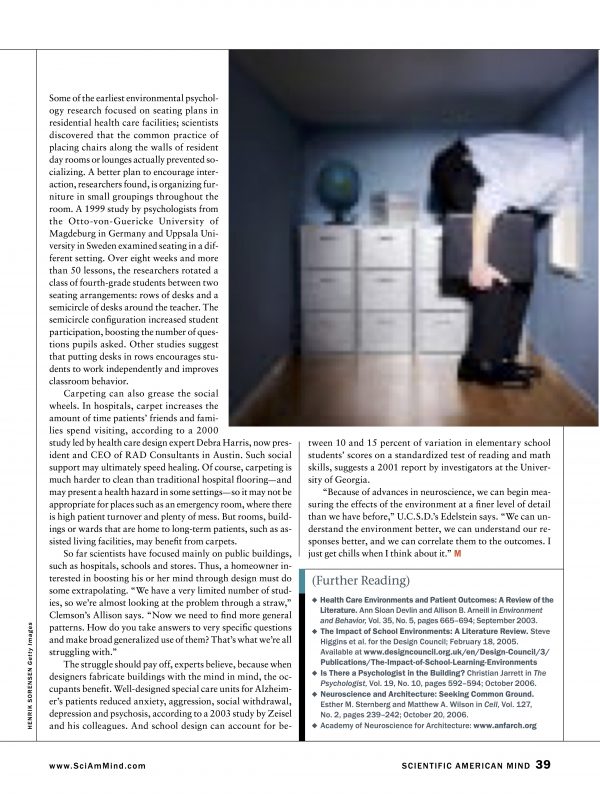Dubbed ‘the scientific search for the soul’ within a Western consumer culture where the mind and body are understood as separate entities, the revolutionary data enlightening those in the cognitive and neuro-sciences is beginning to provoke paradigm shifts within the architectural profession, through academic institutions such as The Academy of Neuroscience for Architecture and literature from respected architectural theorists such as Alberto Perez-Gomez and Juhani Pallasmaa. The practical knowledge base provided the architectural community through this collaborative nature between both architects and neuroscientists, is allowing us to better understand how architectural settings influence human experience and how the human mind (and its instrument, the brain) react continuously to these settings. According to John Paul Eberhard, author of Brain Landscape: The Coexistence of Neuroscience and Architecture, this research is elevating our understanding of “how classroom design affects the cognitive processes of children, how the design of hospital rooms could impact the recovery rate of patients, how working environments likely impact the productivity of white-collar workers, how sacred spaces install a sense of awe in those who worship there, and much more.”
“The brain controls our behaviour. Genes control the blueprint for the design and structure of the brain. The environment can modulate the function of genes, and ultimately the structure of our brains. Changes in the environment change the brain, and therefore they change our behaviour. Consequently, architectural design changes our brain and our behaviour.”- Dr. Fred Gage (Salk Institute’s Laboratory of Genetics)
Read Emily Anthes’s thought-provoking article to discover compelling details of scientific experiments and architectural manifestations making an impact on people’s lives…
by H. Tailor (HUB Architect)
by H. Tailor (HUB Architect)
